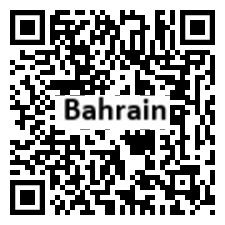Introduction
Background
In 1783, the Sunni Al-Khalifa family took power in Bahrain. In order to secure these holdings, it entered into a series of treaties with the UK during the 19th century that made Bahrain a British protectorate. The archipelago attained its independence in 1971.
Geography
Area
total: 760 sq km
land: 760 sq km
water: 0 sq km
Climate
arid; mild, pleasant winters; very hot, humid summers
Natural resources
oil, associated and nonassociated natural gas, fish, pearls
People and Society
Population
1,553,886 (2023 est.)
Ethnic groups
Bahraini 47.4%, Asian 43.4%, other Arab 4.9%, African 1.4%, North American 1.1%, Gulf Co-operative countries 0.9%, European 0.8%, other 0.1% (2020 est.)
Languages
Arabic (official), English, Farsi, Urdu
Religions
Muslim 74.2%, other (includes Christian, Jewish, Hindu, Baha'i) 25.8% (2020 est.)
Population growth rate
0.85% (2023 est.)
Government
Government type
constitutional monarchy
Capital
name: Manama
Executive branch
chief of state: King HAMAD bin Isa Al-Khalifa (since 6 March 1999); Crown Prince SALMAN bin Hamad Al-Khalifa (born 21 October 1969)
head of government: Prime Minister Crown Prince SALMAN bin Hamad Al-Khalifa (since 11 November 2020); Deputy Prime Minister and Minister for Infrastructure KHALID bin Abdallah Al Khalifa (since 13 June 2022)
Legislative branch
description: bicameral National Assembly consists of:
Consultative Council or Majlis al-Shura (40 seats; members appointed by the king)
Council of Representatives or Majlis al-Nuwab (40 seats; members directly elected in single-seat constituencies by absolute majority vote in 2 rounds if needed; members serve 4-year renewable terms)
Economy
Economic overview
growing, economically diverse Middle Eastern island economy; major recovery and balancing efforts to fulfill Economic Vision 2030; regional finance hub; increasing openness; high youth unemployment; water scarcity amid reservoir depletion
Real GDP (purchasing power parity)
$72.267 billion (2021 est.)
$70.694 billion (2020 est.)
$74.364 billion (2019 est.)
Real GDP per capita
$49,400 (2021 est.)
$47,800 (2020 est.)
$49,800 (2019 est.)
Agricultural products
mutton, dates, milk, poultry, tomatoes, fruit, sheep offals, sheep skins, eggs, pumpkins
Industries
petroleum processing and refining, aluminum smelting, iron pelletization, fertilizers, Islamic and offshore banking, insurance, ship repairing, tourism
Exports
$35.235 billion (2021 est.)
$30.097 billion (2018 est.)
$26.732 billion (2017 est.)
Exports - partners
United Arab Emirates 17%, Saudi Arabia 16%, United States 7%, Japan 7%, India 4% (2021)
Exports - commodities
refined petroleum, aluminum, iron ore and reductions, aluminum wiring, crude petroleum (2021)
Imports
$27.577 billion (2021 est.)
$27.187 billion (2018 est.)
$23.876 billion (2017 est.)
Imports - partners
United Arab Emirates 24%, Saudi Arabia 15%, Brazil 12%, China 9%, India 6% (2021)
Imports - commodities
iron ore, jewelry, cars, floating platforms, refined petroleum, gold, broadcasting equipment (2021)
Exchange rates
Bahraini dinars (BHD) per US dollar -
Exchange rates:
0.376 (2021 est.)
0.376 (2020 est.)
0.376 (2019 est.)
0.376 (2018 est.)
0.376 (2017 est.)
Page last updated: Wednesday, December 06, 2023
